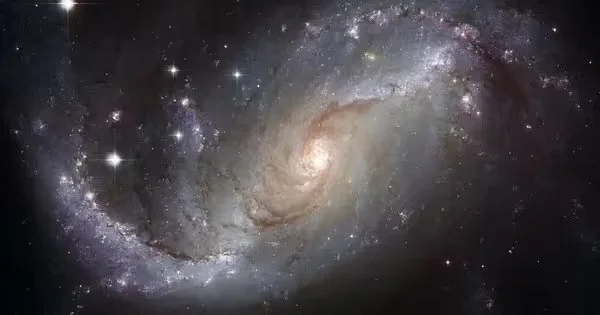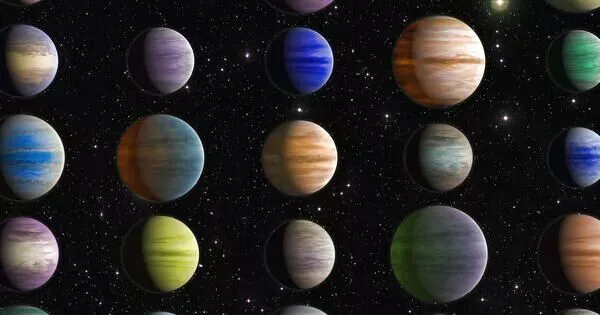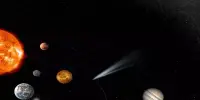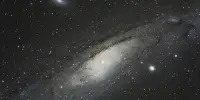The Gaia satellite, launched by the European Space Agency in 2013, has conducted a massive survey of the Milky Way, mapping the positions and motions of over 1.7 billion stars, as well as the positions of thousands of other celestial objects, such as galaxies and quasars. The data from this survey has revealed previously unknown details about the structure and history of the Milky Way, including new insights into the formation and evolution of stars and planets. This is one of the largest and most detailed astronomical surveys ever conducted, and is expected to provide a wealth of information for scientists studying the universe for years to come.
Astronomers have released a massive survey of the Milky Way’s galactic plane. The new dataset contains a staggering 3.32 billion celestial objects, making it the largest such catalog to date. The data for this unprecedented survey were collected using the US Department of Energy’s Dark Energy Camera at the National Science Foundation’s Cerro Tololo Inter-American Observatory in Chile, a NOIRLab Program.
Hundreds of billions of stars, gleaming star-forming regions, and towering dark clouds of dust and gas make up the Milky Way Galaxy. It is a herculean task to image and catalog these objects for study, but a newly released astronomical dataset known as the Dark Energy Camera Plane Survey (DECaPS2) reveals a staggering number of these objects in unprecedented detail. The DECaPS2 survey, which took two years to complete and generated more than ten terabytes of data from 21,400 individual exposures, identified approximately 3.32 billion objects, making it the largest such catalog compiled to date. The dataset is available for astronomers and the general public to explore here.
One of the main reasons for the success of DECaPS2 is that we simply pointed at a region with an extraordinarily high density of stars and were careful about identifying sources that appear nearly on top of each other.
Andrew Saydjari
The Dark Energy Camera (DECam) instrument on the Victor M. Blanco 4-meter Telescope at Cerro Tololo Inter-American Observatory (CTIO), a Program of NSF’s NOIRLab, captured this unprecedented collection. CTIO is an international astronomical telescope constellation perched atop Cerro Tololo in Chile at an elevation of 2200 meters (7200 feet). The high altitude of CTIO provides astronomers with an unrivaled view of the southern celestial hemisphere, allowing DECam to capture the southern Galactic plane in such detail.
DECaPS2 is an optical and near-infrared survey of the Milky Way plane seen from the southern sky. DECaPS’s first data set was released in 2017, and with the addition of the new data set, the survey now covers 6.5% of the night sky and spans a staggering 130 degrees in length. While this may appear to be a small amount, it is equivalent to 13,000 times the angular area of the full Moon.
The DECaPS2 dataset is freely accessible to the scientific community and is hosted by NOIRLab’s Astro Data Lab, which is part of the Community Science and Data Center. Interactive access to the imaging with panning/zooming inside of a web browser is available from the Legacy Survey Viewer, the World Wide Telescope and Aladin.
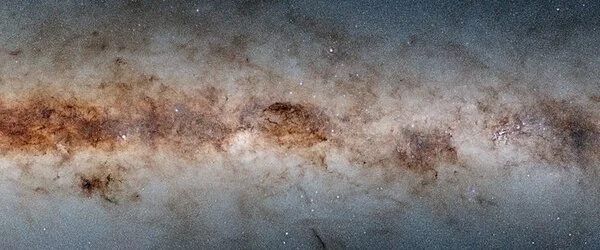
Most of the stars and dust in the Milky Way are located in its disk – the bright band stretching across this image — in which the spiral arms lie. While this profusion of stars and dust makes for beautiful images, it also makes the Galactic plane challenging to observe. The dark tendrils of dust seen threading through this image absorb starlight and blot out fainter stars entirely, and the light from diffuse nebulae interferes with any attempts to measure the brightness of individual objects. Another challenge arises from the sheer number of stars, which can overlap in the image and make it difficult to disentangle individual stars from their neighbors.
Despite the difficulties, astronomers explored the Galactic plane in order to gain a better understanding of our Milky Way. They were able to see through much of the light-absorbing dust by observing at near-infrared wavelengths. The researchers also used an innovative data-processing method to better predict the background of each star. This helped to reduce the effects of nebulae and crowded star fields on such large astronomical images, ensuring a more accurate final catalog of processed data.
“One of the main reasons for the success of DECaPS2 is that we simply pointed at a region with an extraordinarily high density of stars and were careful about identifying sources that appear nearly on top of each other,” said Andrew Saydjari, a graduate student at Harvard University, a researcher at the Center for Astrophysics | Harvard & Smithsonian and lead author of the paper. “Doing so allowed us to produce the largest such catalog ever from a single camera, in terms of the number of objects observed.”
“When combined with Pan-STARRS 1 images, DECaPS2 provides a 360-degree panoramic view of the Milky Way’s disk and reaches much fainter stars,” said Edward Schlafly, an AURA-managed Space Telescope Science Institute researcher and co-author of the paper describing DECaPS2 published in the Astrophysical Journal Supplement. “We can map the three-dimensional structure of the Milky Way’s stars and dust in unprecedented detail with this new survey.”
“I’ve been looking for a way to make better measurements on top of complex backgrounds since my work on the Sloan Digital Sky Survey two decades ago,” said Douglas Finkbeiner, a professor at the Center for Astrophysics, co-author of the paper, and project principal investigator. “This work has done all of that and more!”
“This is quite a technical achievement. Consider a group photo of over three billion people in which every single person is identifiable! “Debra Fischer, NSF division director of Astronomical Sciences, agrees. “Astronomers will spend decades poring over this detailed portrait of the Milky Way’s more than three billion stars. This is an excellent example of what collaboration among federal agencies can accomplish.”
